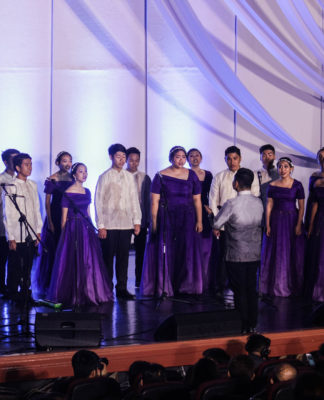University officials were optimistic that UST would improve in this year’s Asiaweek survey of top Asian universities from last year’s 74th finish out of 77, a modest improvement from the preceding year’s 78th out of 79. In fact, the University created a steering committee last year to devise a contingency and improve its standing based on the survey’s criteria.
But, alas, the much-awaited survey has been discontinued by the magazine due to “editorial reasons.” The justification is quite vague, probably Asiaweek has come to its senses and realized it is doing the survey the wrong way.
In the four years of the survey, there have been many criticisms about it, from the methodology to data acquisition and verification.
But, in spite of its glaring flaws and inconsistencies, the survey created a strong impact on UST as well as other Philippine universities. The yearly survey proved to be a yearly tune-up or check-up of the University’s standing vis a vis other universities in Asia. It could be likened in fact to an annual check-up, a yearly general diagnosis and assessment of a person’s health and well being.
Like a human body, UST should always keep track of its vital signs in order to stay sound and stable. But like an ordinary medical diagnosis, the patient should seek second and third opinions to confirm the first diagnosis.
It would be foolhardy to look at surveys as an end-all or be-all. Its worth is that it stimulates self-evaluation, self-criticism, and hopefully, self-medication. UST need not depend on surveys, much more on the Asiaweek survey. Instead it should conduct its own self-evaluation so that it can apply self-medication.
Self-critic would involve an honest and humble look at the institution its strengths and weaknesses. Toward this, it would be good to involve all the sectors including the studentry, not only to feel the pulse of the Thomasian community, but also to come up with a picture, warts and all of the true state of the University.
Extending the analogy of the human body, UST should give emphasis to its members or parts. In a functionalist perspective, the University works like a human body, where body parts are liken to the different sectors that constitute the University. If one part fails to deliver or carry out its task, the rest will be affected. UST is old and venerable, still strong, but not immortal. Anytime, it can break apart and worse fade into anonymity and mediocrity.
Undoubtedly, UST remains as one of the best in Asia. But with its still conservative attitude towards change and adaptation of the times, it may remain a laggard.
The University’s 390 years of rich history would come to naught, if the present administration failed to consolidate the strengths of the institution and nurture them.
UST prides itself for being the Royal, Pontifical and Catholic, the oldest university in Asia, and the biggest Catholic university in the world. But these are only gems of a decaying crown, waiting to be polished and restored to its old glory.















